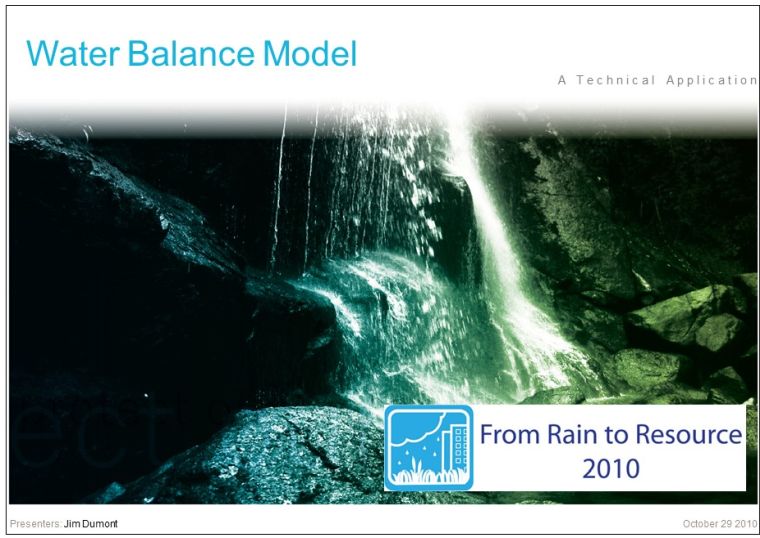FLASHBACK TO 2010 FROM RAIN TO RESOURCE WORKSHOP: “The Water Balance Model allows the user to quickly establish the existing base line that will become the standard used to measure the performance of future development scenarios,” stated Jim Dumont
Note to Readers:
In October 2010, the Okanagan Basin Water Board (OBWB) and the BC Water and Waste Association co-hosted a 2-day workshop titled ‘From Rain to Resource: Stormwater Management in a Changing Climate‘. The purpose of Day 2 was to integrate the perspectives of the people working on the ground and those developing and adopting policy.
Jim Dumont, Engineering Applications Authority for the BC Inter-Governmental Partnership, delivered a presentation on the technical application of the Water Balance Model.

Watershed Objectives & Adaptive Management
“The evolution of the capabilities of the web-based Water Balance Model (WBM) has arisen in response to the need to embrace adaptive management in the creation of watershed objectives and to quickly test alternative green  infrastructure techniques prior to implementation,” stated Jim Dumont
infrastructure techniques prior to implementation,” stated Jim Dumont
“The WBM allows the user to quickly establish the existing, or the predevelopment, base line that will become the standard used to measure the performance of future development scenarios during the planning and design of a project. This allows the user to test various methods to establish the easiest and best ways to achieve the most desirable vision of the future for the Site, the Development, or the Watershed.”
Data Inputs for Hydrologic Simulation
“The WBM embeds land use zoning from municipal member partners, soil calculator and a new calculation engine QUALHYMO utilizing the Environment Canada climate data that includes rainfall, snow, temperature and evaporation.”
“The easy access and calculation speed combined with the embedded data and information allows the user to easily and effectively plan and design green infrastructure techniques which will achieve the vision and objectives established for the Site, the Development, or the Watershed,” concluded Jim Dumont.
To Learn More:
To read the complete story posted on the Convening for Action Community-of-Interest in October 2010, click on Water Balance Model facilitates adaptive management approach to implementation of alternative green infrastructure techniques
To download a PDF copy of the presentation by Jim Dumont, click on Water Balance Model.




2010

